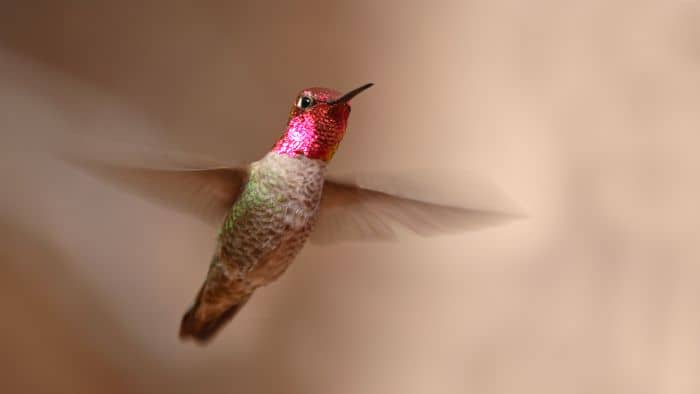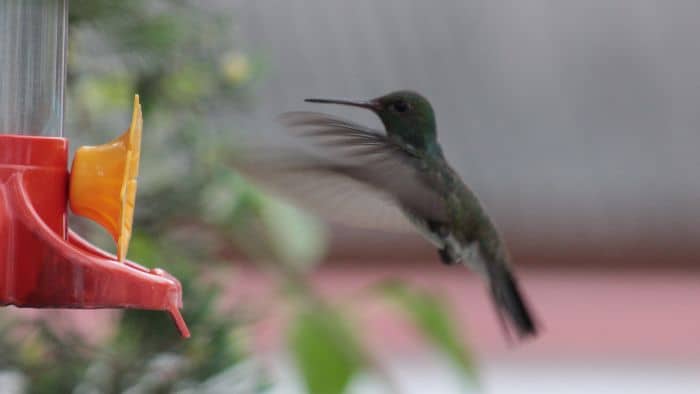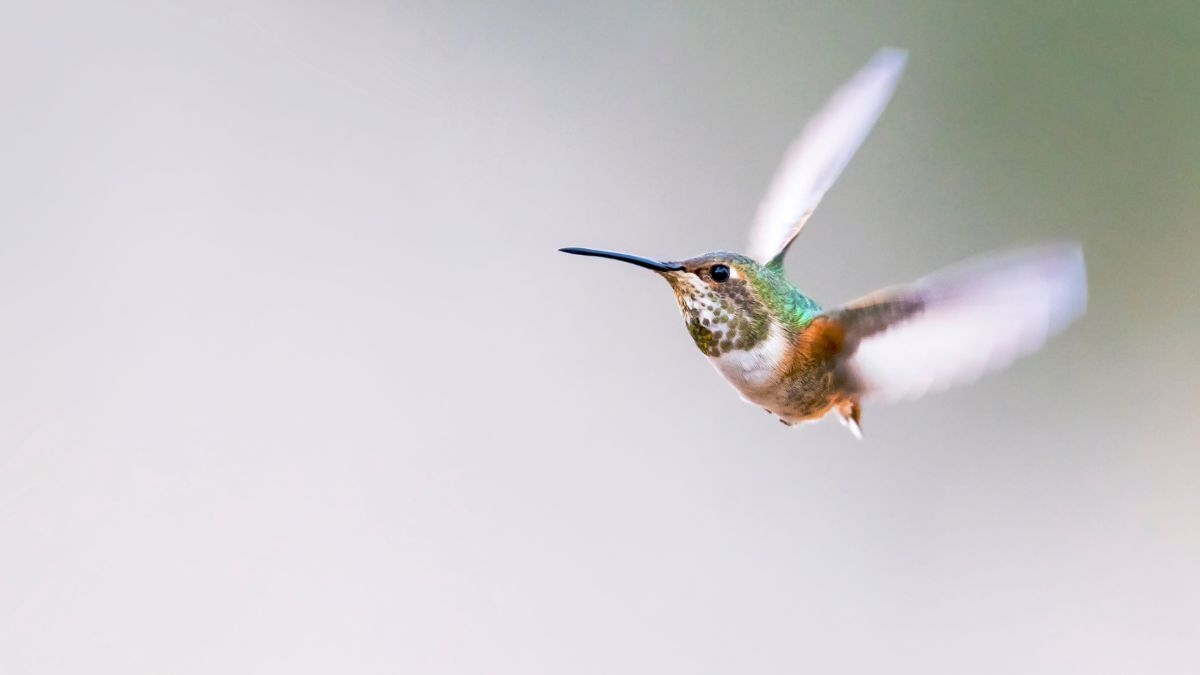Wondering how fast do hummingbirds beat their wings? The real answer might surprise you more than you can imagine.
Do you want to know how fast do hummingbirds beat their wings? That’s great, but first, let us share with you a few fascinating facts about these alluring creatures.
The hummingbird is the world’s tiniest bird. Their small size, combined with the bright colors of feathers and special nature, make these tiny creatures a unique decoration of nature. Hummingbirds have significantly fewer feathers than any other bird, and this is due to several factors, including their small size and the fact that they can fly more easily with fewer feathers.
They flap their wings so often that you simply cannot see them. However, today with advanced technology, scientists can precisely measure and study wing movements that are too fast to be seen by the human eye. Hummers are also recognized as the sole species of bird with the capacity to hover. They can really remain stationary when hovering rather than moving forward, backward, or even up or down.
How Fast Do Hummingbirds Beat Their Wings?
On average, hummingbirds beat their wings more than 50 times per second; also the fastest recorded flap of the world’s tiniest bird is about 80 times per second.
Considering that these are the smallest birds in the world, it is hard to imagine that hummingbirds are one of the fastest animals in the animal kingdom. But reaching such high speeds is pretty easy for these birds because the shape and size of their wings help them generate tremendous power.
Now that you know the answer to the question of “how fast do hummingbirds beat their wings”, it is time to answer some of the most common questions you have asked us lately. Are you in? – Perfect, let’s go!

How Fast Do Hummingbird Wings Flap Mph?
Hummingbirds can fly surprisingly fast and the rate of wings and flaps differs from species to species with smaller hummingbirds flapping faster. These incredibile birds regularly reach speeds of 20 to 30 miles per hour. Amazing, isn’t it?
They are one of the fastest fliers of their size, reaching speeds of up to 37 mph and 60 mph on courtship jumps.
The wing design is also very different from other birds, being shaped like a sword and only connected to the body from the dorsal joint. Accordingly, they can stay in the air and move around the same pivot point. Considering that they fly very fast for their size, these small birds have a very fast metabolism. This means that they spend most of their energy flying, so they eat almost all day. A hummingbird eats up to twice its body weight each day.
How Do Hummingbirds Beat Their Wings So Fast?
Like other birds, most hummingbirds flap their wings and fly forward. However, hummingbirds mostly hover by flapping their wings horizontally. The wings rotate in a figure eight pattern, pushing air back and forth, creating lift on both the forward and aft flaps of the wing. That is why hummingbirds are symbols of lightness, flexibility, and adaptability to changes.
One of the most fascinating facts is that these tiny birds fly in the shape of a horizontal eight, i.e. the sign of infinity. The hummingbird teaches us that nothing in nature is accidental and that everything is in perfect harmony.
Studies have shown that mitochondria in the muscle cells in these birds function twice as fast as in mammals. Therefore, these birds can generate energy faster and maintain flight speeds unmatched by other animals. Efficient use of muscles allows quick small movements to generate large amounts of force.
When you consider all these facts, it’s no wonder that the answer to the question “how fast do hummingbirds beat their wings” is exactly what it is, right?
What Bird Can Flap Its Wings The Fastest?
Did you know that ruby-throated hummingbird (or as it is scientifically called, Archilochus colubris) beat wings can rate to 200 per second, in contrast to other hummers that can produce normally 90 wing beats.
We can compare wing beats (in 10 seconds) of hummingbirds to some other birds.
For example, while a broad-tailed hummingbird can make 500 wing beats per 10 seconds, the American Crow can make only 20 wing beats and Rock Pigeon can make 30 beat wings per 10 seconds.
It is very interesting to compare them with other birds when we imagine that these birds are much bigger than hummingbirds, but they are much slower in speed and wing movements.
Based on the analysis conducted by Christopher James Clark of the University of California, Berkeley, it was discovered that the male Anna’s Hummingbird really folds its wings to the side during courtship, which actually means that this tiny jewel-like bird can reach speeds of 60 mph. It is important to emphasize that this is also the highest speed recorded for a vertebrate of this size.
Are Hummingbirds The Fastest Bird?

They are the smallest birds, but not the fastest though.
The peregrine falcon (Falco peregrinus) is the fastest creature, reaching speeds of at least 124 mph and sometimes 168 mph when swooping from great heights or catching prey in the air during territorial displays.
Hummingbirds have the fastest flapping wings, but they are not the fastest birds. While flying, their wings seem transparent or totally invisible. Except they can flap their wings extremely fast, they also have a very fast heartbeat. In fact, hummingbirds have the largest heart-to-body size ratio in the entire animal kingdom.
The heart accounts for up to 2.5% of their body weight. Generally, a hummingbird’s heart beats at full speed 1,260 times per minute. Comparing this to the human heart rate of 60-100 beats per minute, it is pretty fast.
To Conclude: How Fast Do Hummingbirds Beat Their Wings?
Comparing the size and size of their wings, it is fascinating how these birds beat their wings in a matter of seconds. Moreover, if it is that size, it will definitely surpass fighter planes and space shuttles! These powerful creatures can reach speeds of 20 to 30 miles per hour daily.
They are also famous for the singing sound created by their wings, which flap at high frequencies that humans can hear you might think you have bees buzzing in your head, but perhaps it’s a swift little hummingbird, fearlessly defending its territory.
If you have any questions, don’t hesitate to let us know in the comment section below.
Before you go, take a look at some other articles: Do Hummingbirds Have To Keep Moving To Avoid Death? Truth Or Myth


